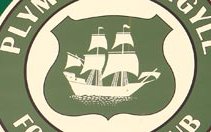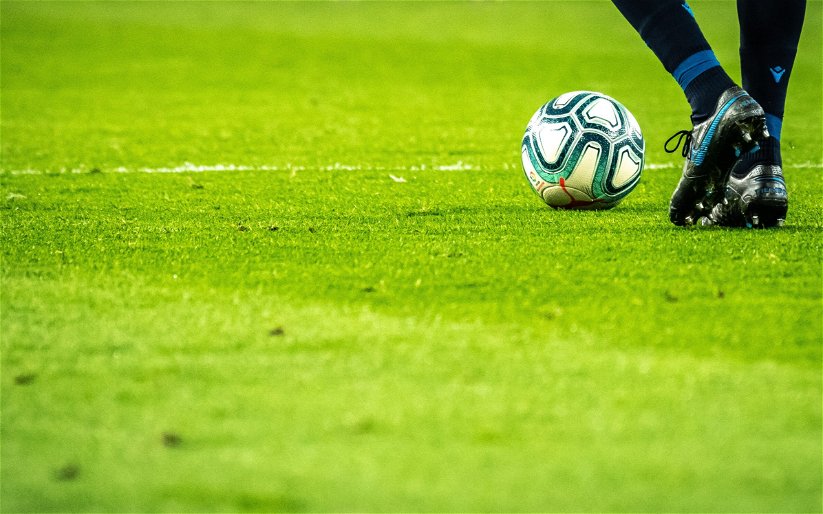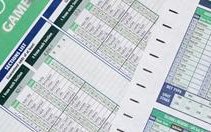Long serving defender Paddy Ratcliffe is the subject for this edition in the Where Are They Now series.
PADDY RATCLIFFE – Born 31st December 1919 Dublin, Ireland.
Paddy began his football career as a full back with Dublin club Bohemians, he played for them for two seasons before joining the RAF in 1941.
He served as a rear gunner on a Lancaster, probably the most dangerous position to be on the plane as enemy fighters invariably attacked from behind. His plane was shot down on a raid over Essen and after parachuting clear he was captured and sent to Stalag Luft Three prisoner of war camp, made famous by the film The Great Escape and the Wooden Horse escape.
When the war was over he returned to Bohemians to continue his football career, he only stayed with them for the first two months of the 1945-46 season before joining Notts County. Although he was with them for the rest of the season he never made a first team appearance so it was no surprise when he left to join Wolves.
1947-48 wasn’t a lot better for Paddy only making two appearances.
When the season was over Argyle manager Jack Tresadern who was looking for a full back made an offer for him and although it meant dropping down to Division 2 he was happy to join the club to get regular first team football. He made his debut on 23rd August 1947 in the opening day of the season, a 6-1 defeat at Newcastle in a game watched by a crowd of 52,642, the Geordies would finish the season as runners-up and promoted to Division 1 despite Argyle winning the return game at Home Park 3-0.
After only three games of the season former player Jimmy Rae replaced Jack Tresadern as manager. Paddy retained his place as right back for the first fifteen games before being replaced by Bobby Stuart. When Bobby picked up an injury at the end of February Paddy took over for four games before once again returning to the reserves.
When Bobby left the club with two games of the season remaining the manager played George Silk at right back with Paddy still out in the cold.
Paddy hardly got a look in during the 1948-49 season, he played in the last five games after Argyle had gone eight games without a win. They only lost one of the five games he played so I guess he thought he had done enough to be first choice right back the following season.
Jimmy Rae thought differently with George Silk playing in the first five games of the 1949-50 season with Argyle losing four of them. John Hartery was tried at right back for the next game but they lost that one as well. Paddy returned to the first team for two games, both heavy away defeats, the first 5-1 at Bury and three days later 4-2 at Hull.
George then played in the next fifteen games before Paddy came back for all but one of the last twenty one games. He managed to score his first league goal as well, it came in a 1-1 draw at Leeds on 15th April.
Although they only lost four of the games when Paddy returned to the first team their early season form meant they finished in 21st and along with Bradford Park Avenue were relegated.
Paddy was the undisputed wearer of the number two jersey for the 1950-51 season, only missing three games after getting injured on Christmas Day in a 1-0 defeat at Bristol City. In the game before that he scored the opener in a 2-1 win at home to Ipswich with the winner coming from an own goal. His other goal came in the biggest home win of the season, in a 5-1 hammering of Swindon, Paddy scored the last goal after Maurice Tadman, George Dews, Alex Govan and George Willis had all found the net. Argyle had a better season finishing fourth.
1951-52 was a good one for both Paddy and Argyle, he was an ever present, playing in all 46 league and one FA cup games as his team romped away with the league ending the season as Champions, five points in front of second placed Reading.
Paddy even managed to score three goals. He got his first on 1st September in a 3-1 win at Shrewsbury, with George Dews and Maurice Tadman getting the first two. Four days later at Home Park in a 3-1 win over Colchester exactly the same players scored the goals, George once again opened the scoring with Paddy adding the third and Maurice scoring in between theirs. He scored his third of the season on Easter Saturday in a 2-2 draw at home to Brighton watched by Argyle’s best crowd of the season of 31,755 with Maurice Tadman getting the second goal.
Paddy continued to play first team football for the first half of the 1952-53 season, he appeared in the first 28 games then didn’t play again that season, Argyle were playing well, in fact they finished the season in fourth place, still their highest ever finish, so I can only assume he had an injury and was forced out for the rest of the season or it was a short term injury but the form of his replacement, Ted Jelly, was so good he couldn’t get his place back.
I suspect it was a serious injury that kept Paddy out of the first team for the first half of the previous season as he didn’t really return until the end of November 1953 then hardly missed a game for the rest of the season.
He managed to score two goals as well, the first came in early March in a 2-2 draw at home to Hull with Neil Langman scoring the other goal. The same two players both scored on the last day of the season in a 3-2 defeat at Stoke.
When the 1953-54 season was over Argyle embarked on their most ambitious tour since they travelled to South America in the 1920’s when they went to the United States.
The team and officials left Southampton on 27th April, the day after the season had ended on the SS Ille De France bound for New York. They played a total of ten games on the tour winning eight of them and losing the other two, the games they won were all against teams from USA with German team Borussia Dortmund, who were also on tour, beating Argyle twice.
The standard of American football couldn’t have been too high a standard then as Argyle twice scored eight in a game and on 16th May beat the Colorado All Stars 16-2 with Sammy McCrory scoring six. They played their last game on 1st June in New York and sailed on the SS Flandre two days later.
They arrived back in Plymouth on the 9th after travelling 14,000 miles in 44 days. The Argyle goalie Bill Shortt stayed in America as Chelsea who were touring there asked if they could borrow him for their tour. Chelsea paid Argyle back by coming to Plymouth on 18th October to play in a floodlight friendly with Chelsea winning the game 5-1.
Despite being thirty four Paddy continued to be the club’s first choice right back throughout the 1954-55 season, only missing two games, with Argyle losing both of them, 6-1 at West Ham in February and 2-0 at Rotherham in the last away game of the season. He added another two goals as well, he scored the second goal in a 2-2 draw at home to Middlesbrough in the opening game of the season with Neil Langman scoring the first goal. The same players got on the scoresheet in November in a 3-2 defeat at Lincoln with Paddy again scoring the second Argyle goal.
Jack Rowley had taken over as manager on 1st February 1955 and at the start of the 1955-56 season he decided to use George Robertson at right back. After a run of five successive defeats Paddy was brought back to the first team.
Argyle stopped the rot with a 1-1 draw at home to Port Vale with Jack Rowley scoring the goal, he scored another two in the next game a 2-1 win at Barnsley.
Despite the improvement in form Paddy only played in another six games after that. He played his last game on 3rd December in a 0-0 draw at Rotherham and decided to retire.
In the nine years he played for Argyle he made 246 appearances and scored ten goals.
Although he had finished playing Paddy wasn’t finished with football. He obviously liked America as he and his family emigrated there, setting in Los Angeles where he set up the first English Soccer Academy in the country.
Paddy never returned to England and passed away in Los Angeles in 1973.
plymouthvital@aol.co.uk
Share this article



